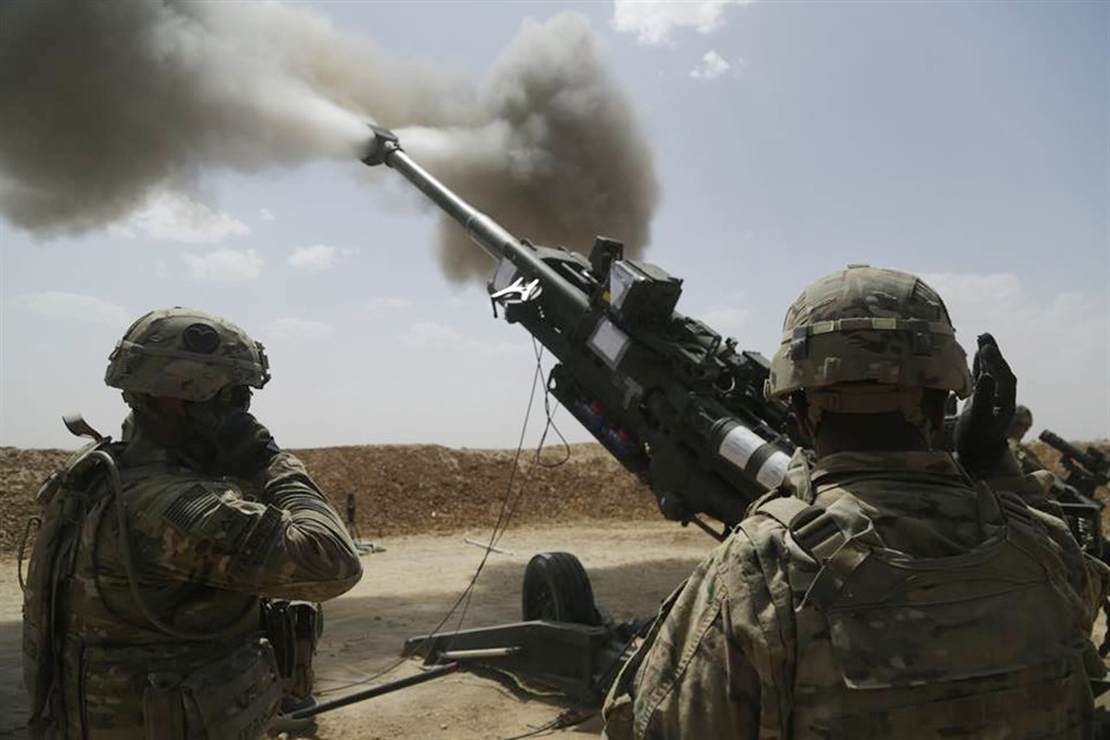
In for a penny, in for a pound. And for Howitzers and more too:
U.S. expects to begin training Ukrainian military on American-provided Howitzer artillery systems outside of the country “in the next few days”: senior U.S. defense official
— Jack Detsch (@JackDetsch) April 18, 2022
It’s a significant move, one that may escalate matters with Vladimir Putin. Ukraine’s unexpectedly robust defense has had one unfortunate effect, which is that they have run out of heavier artillery ammunition necessary to stop and then to roll back Russian invaders. Over the weekend, that supply issue became critical, especially with the looming Russian offensive in the Donbas region.
It looks like NATO has run short as well on the Soviet inventory:
There is growing concern about the need to get more ammunition — and in particular artillery ammunition — to Ukrainian forces more rapidly as heavy ground combat against Russian units is expected to unfold in the coming days, according to a US official.
While the United States is shipping 18 155mm towed howitzers and 40,000 artillery rounds to Ukraine as part of the new security assistance announced by President Joe Biden’s administration this week, even that amount could be expended within several days, raising the prospect of Ukraine forces running out of ammunition, the official said.
READ RELATED: Putin Critic Writes Op-Ed From Jail, Says 'Russia Will Be Free'
During some of the heavy earlier fighting, Ukrainian forces fired up to thousands of artillery rounds in a given day, the official noted.
Consider this the death of plausible deniability … and implausible deniability, for that matter. Until now, we have mostly supplied Ukraine indirectly by allowing our allies in eastern Europe to send their old Soviet-era arms without explicit NATO involvement, and then backfilling them with newer US systems. That was a cautious strategy aimed at holding down the potential for escalation directly with NATO.
Of course, that cat’s been out of the bag for a while as NATO-alliance leaders go public with the extent of support we have already supplied Ukraine. We’re holding press conferences to discuss the specific armament shipments, which feeds right into Vladimir Putin’s narrative about this war being against NATO rather than an annihilation of Slavic brothers and sisters.
Speaking of which, Biden’s announcement about the Howitzers last week already suggested a more direct supply to Ukraine, but Detsch’s report suggests that this will soon accelerate. The problem appears to be that Ukraine has lasted long enough for our former Iron Curtain allies in eastern Europe to have run out or are at a strategic floor of inventory necessary for their defense. Until the US and other NATO suppliers can resupply them, the finite amount of materiel available for Ukraine will run out, and so will our options for caution.
We’ve hit the fish-or-cut-bait point on Ukraine: either we keep arming them or we don’t. The former option means we’ll have to start arming them with US and NATO systems, which would essentially be the de facto outcome that Putin claims to want to prevent — NATO systems on his border facing his troops. The latter option is a surrender of Ukraine to the invaders and the betrayal of Volodymyr Zelensky, a political disaster that won’t wear well in any Western country at this point. If we’re going to set up a training program of any significance, that means we’ll be sending a lot more than 18 towed Howitzers and the ammunition for their use. We might end up seeing Western anti-aircraft systems and perhaps anti-ship platforms too after the sinking of the Moskva. We would be escalating by arming Ukrainians more directly, perhaps a signal that the West and especially the White House now recognize that incrementalism has largely failed to restrain Putin.
That’s yet another way this war has backfired on Putin, but it’s also one way it could still backfire on us. How will Putin react when Ukraine starts using not just old Soviet arms that are technologically inferior to Putin’s armaments, but Western heavy arms that will likely prove superior? Putin might opt to start striking the lines of communication bringing those arms into Ukraine, and we might end up with a intercontinental war as a result. Putin will lose that too, but he can make sure no one wins it.
Source:






